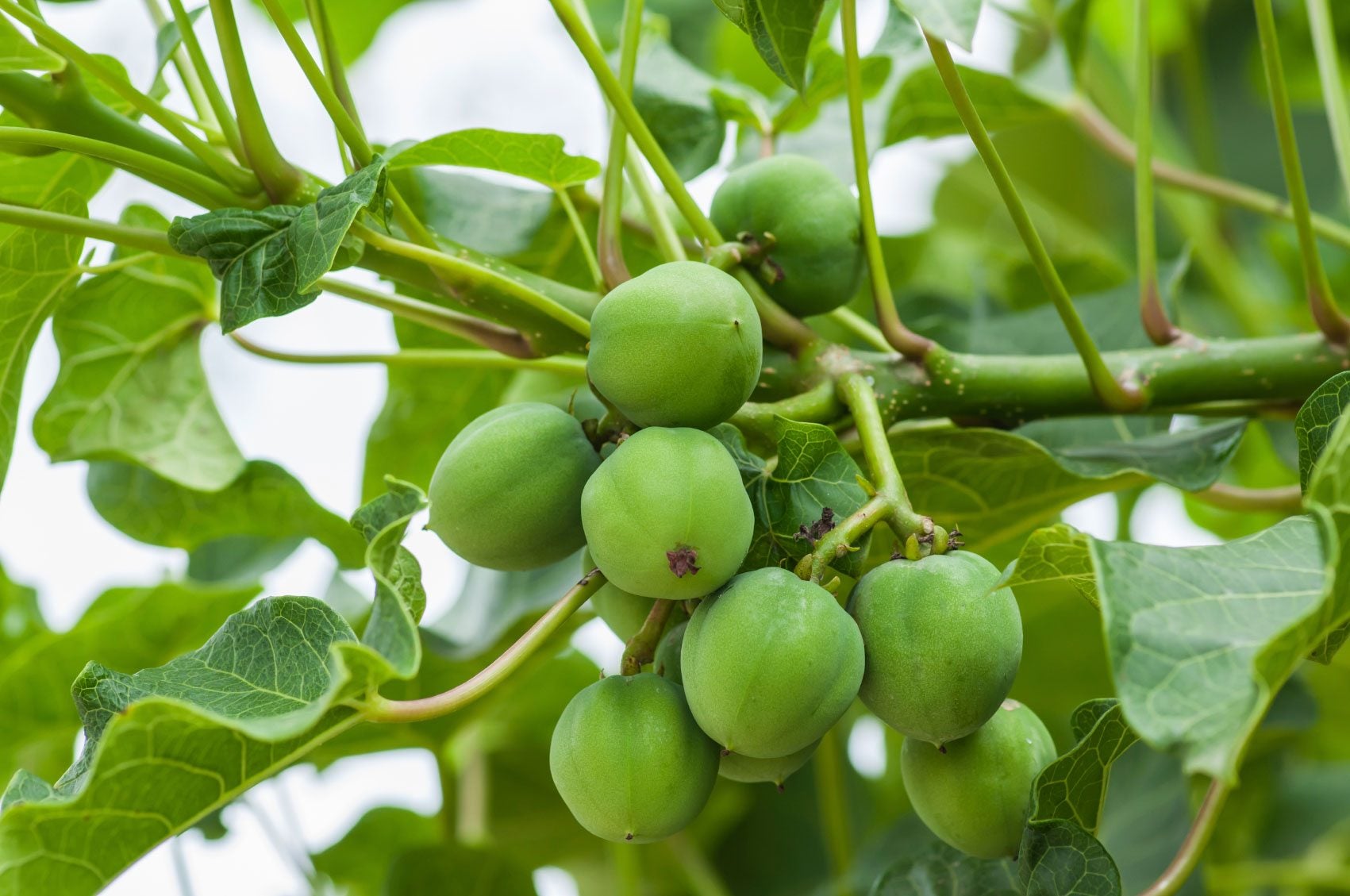What Is A Jatropha Curcas Tree: Jatropha Uses In The Landscape


Jatropha (Jatropha curcas) was once touted as the new wunderkind plant for biofuel. What is a Jatropha curcas tree? The tree or bush grows in any type of soil at a rapid rate, is toxic, and produces fuel fit for diesel engines. Read on for more Jatropha tree info and see how you rate this plant.
What is a Jatropha Curcas Tree?
Jatropha is a perennial shrub or tree. It is drought-resistant and easy to grow in tropical to semi-tropical locations. The plant lives for up to 50 years and may grow nearly 20 feet (6 m.) tall. It has a deep, thick taproot which makes it adaptable to poor, dry soil. The leaves are oval, lobed, and deciduous. Overall, the plant is not particularly visually appealing, but it does get attractive green cymes of flowerets which turn into a tri-compartment fruit with large black seeds. These large black seeds are the reason for all the hullaballoo, because they are high in burnable oil. An interesting piece of Jatropha tree info is that it is listed as a weed in Brazil, Fiji, Honduras, India, Jamaica, Panama, Puerto Rico, and Salvador. This proves how adaptable and hardy the plant is even when introduced to a new region. Jatropha curcas cultivation can produce oil that is a good substitute for current biofuels. Its usefulness has been challenged, but it is true the plant can produce seeds with an oil content of 37%. Unfortunately, it is still a part of the food vs. fuel debate, as it requires land that could go into food production. Scientists are trying to develop a “super Jatropha” with bigger seeds and, therefore, bigger oil yields.
Jatropha Curcas Cultivation
Jatropha uses are rather limited. Most parts of the plant are toxic to eat due to the latex sap, but it is used as a medicinal. It is useful in treating snakebite, paralysis, dropsy, and apparently some cancers. The plant may have originated in Central to South America, but it has been introduced around the world and flourishes wild in places like India, Africa, and Asia. Chief among Jatropha uses is its potential as a clean burning fuel to replace fossil fuels. Plantation cultivation in certain areas has been attempted, but overall Jatropha curcas cultivation has been a dismal failure. This is because the production mass of oil cannot equal the land use by cropping Jatropha.
Jatropha Plant Care and Growth
The plant is easy to grow from cuttings or seed. Cuttings result in faster maturity and quicker seed production. It prefers warm climates, but it can survive a light frost. The deep taproot makes it drought-tolerant, although the best growth will be achieved with supplemental watering occasionally. It doesn't have any major disease or pest issues in its natural regions. It may be pruned, but flowers and fruit form on terminal growth, so it is best to wait until after flowering. No other Jatropha plant care is necessary. This plant is useful as a hedge or living fence, or just as an ornamental stand-alone specimen.
Sign up for the Gardening Know How newsletter today and receive a free copy of our e-book "How to Grow Delicious Tomatoes".

Bonnie Grant is a professional landscaper with a Certification in Urban Gardening. She has been gardening and writing for 15 years. A former professional chef, she has a passion for edible landscaping.